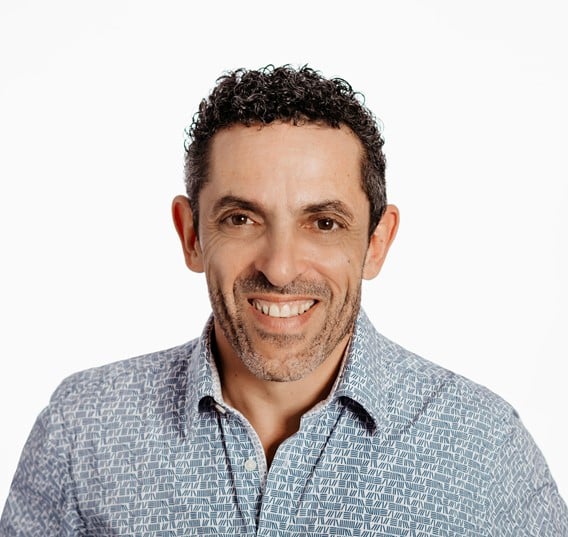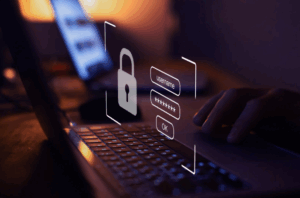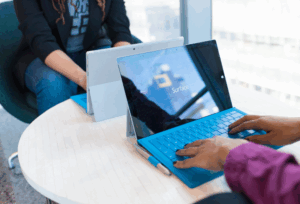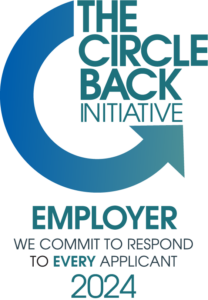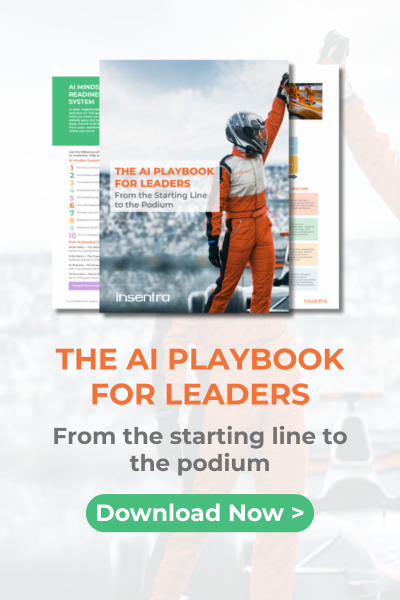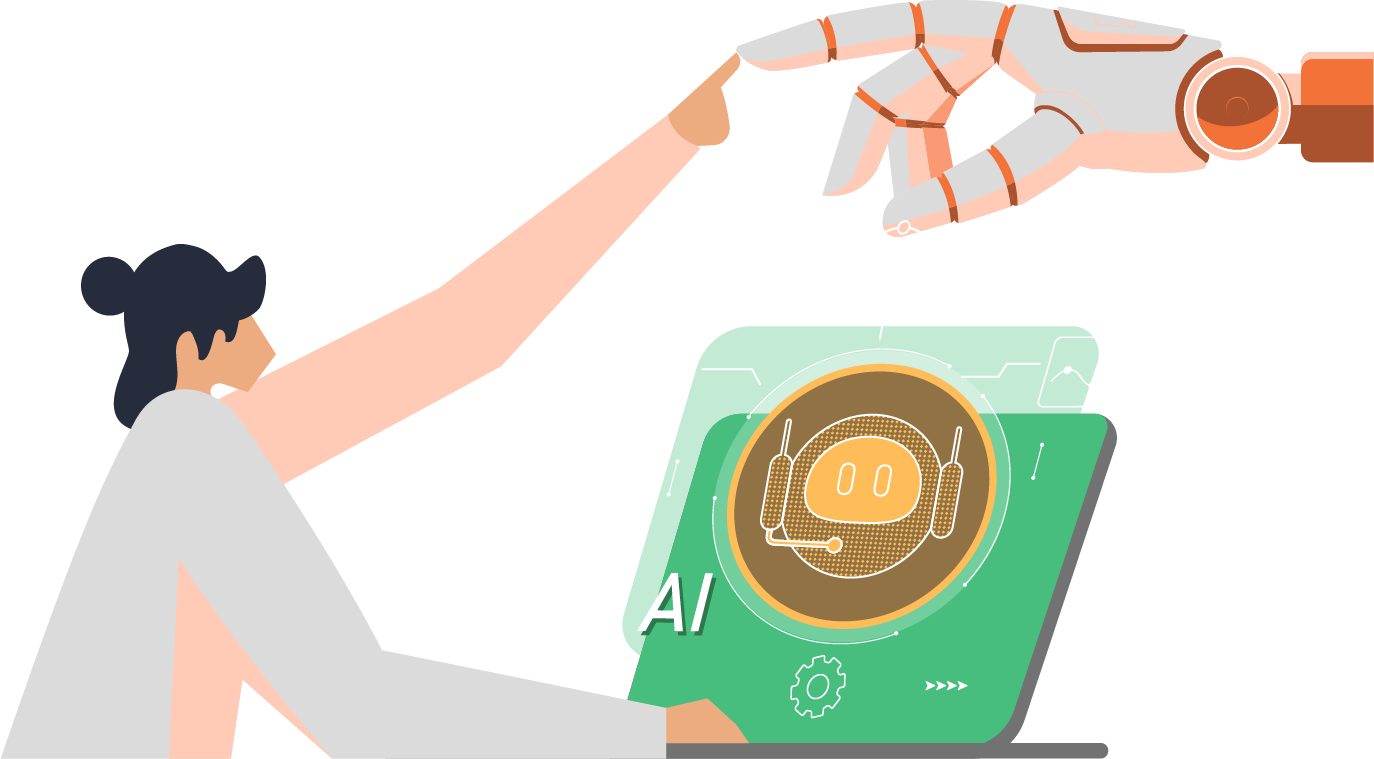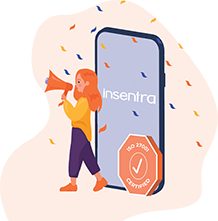The Download with Ronnie Altit ft Leigh Howard
In this episode of The Download, Ronnie is joined by Leigh Howard – International Sales Director for UK based company, IGEL, where they discuss the Insentra + IGEL partnership, and the specific offerings that they provide.
TRANSCRIPTION
Ronnie Altit: Hello again, everyone, welcome back to The Download. Today, I’m joined by Leigh Howard, international sales from IGEL. Leigh, man, welcome to The Download.
Leigh Howard: Thanks, Ronnie, great to be here.
Ronnie: It’s good to have you. An English guy, who spent– how many years here at Aus?
Leigh: That’s fourteen years.
Ronnie: Fourteen years working in Aus with a background in distribution.
Leigh: Yes, absolutely.
Ronnie: The number of the large global distributors that uses or run parts of their businesses here, and evolved in acquisitions, all sorts of things. Now, you find yourself back in the UK and you’re the international sales director at IGEL, tell me the IGEL story?
Leigh: Well, IGEL is a thirty year old company with a three year old startup mentality. Privately owned German company, very profitable, great quality, high quality German engineering be it software and hardware, but we’re on a mission. We’re on a mission to disrupt the end user computing environment. That’s what excited me about this role.
Ronnie: When you say you’re on a mission to disrupt the end user computing environment, a lot of people know IGEL as thin clients and the physical devices. But IGEL is way way away from that now, right? Still doing physical thin clients but the operating system’s really the uniqueness.
Leigh: Yes, that’s right. We discovered the jewel in the crown, which really, our software, our operating system. That innovation that we bring to that software story that you could load that software on any device, access to any Cloud, any virtualized workload, any is really resonating with the partner community, and just importantly, our customers as well.
Ronnie: Absolutely. I think that with us here at Insentra, who is now acting as the massive distributor for IGEL, we’re super excited about it. Particularly so with the edge computing play that’s happening. We’ve had Citrix and VM, we’re applying strongly in this space for a long time. Now, Microsoft’s recently entered with their WVD offering.
As that starts to take hold, that the value proposition of an IGEL kind of approach is really interesting. The way I see it, is to your point, any 64-bit X86 device run the IGEL operating system into it, they deploy it to it all. The USB pocket, we’ll talk about that in a minute. Get that going, and all of a sudden now, you’ve got in a state of endpoint devices that you no longer need to refresh, you can leverage those for as long as you want, and just manage them from a central location.
For me, the real key of that, is what’s the stats the you guys are using? Like, one person can manage five thousand endpoint?
Leigh: More. I mean, not only it’s our software, we’d use CapEx, obviously, because the customer doesn’t have to buy new expensive hardware endpoints. They could just repurpose existing endpoints with our software. The good news about that is that one full time support person could probably manage ten thousand IGEL endpoints, maybe more. You’re saving considerably significant savings on OpEx as well.
Ronnie: You can take the people who are otherwise managing a bunch of Windows endpoints, and take them, repurpose them into something else in your organisation?
Leigh: That’s exactly right.
Ronnie: Then have one person will go after up to ten thousand endpoints.
Leigh: Yes, it’s easy.
Ronnie: That sounds almost too good to be true.
Leigh: Well, it sounds to good to be true, but you’ll just have to talk to our customers. We get great testimonials from customers as well. Some of which are published on our website, some which aren’t, but we always get very positive feedback from our customers.
Can I just take you back to– you just mentioned WVD, sometime ago. Four weeks ago, Microsoft stood up on stage with our CEO and acknowledged two things, two very important things. One, that it was appropriate that Linux now becomes the default operating system on the endpoint, and Windows now belongs in the Cloud.
The second point, is that IGEL is now being confirmed and endorsed by Microsoft as the preferred endpoint software management platform for WVD into Azure. That’s a significant game changer in the market for us, and we hope for Insentral as well.
Ronnie: Hence, our excitement. Obviously, you know, with our prowess with Microsoft and the depth of what we do there, plus our many many years of endpoint virtualisation technology with Citrix. The IGEL Citrix story’s always been strong, the IGEL VMware story’s strong, and now the IGEL Microsoft story is strong. The IGEL AWS story is also very strong.
Leigh: Yes, it is.
Ronnie: You’re kind of like the Switzerland of thin clients.
Leigh: We are the Swiss knife, you’re quite right. That’s why we said we liked it having Insentra as a partner. We see this as absolutely a perfect storm and a marriage made in heaven. You have all the skills already embedded in the country, you got resources here already scaled up across all our alliance partners. For me, it’s a perfect marriage.
Ronnie: To that point, I actually want to talk about what some other people watching this might call the, ‘elephant in the room’. IGEL used to be in Australia. You had a physical presence here, and very rapidly, gone. Why is it that IGEL has now chosen to come- firstly, I think it predated you why IGEL left. I think we could park that because it happened.
Why is it now that the approach IGEL has chosen is to come back to market, not necessarily with your own people and country but leveraging the Insentra company as an organisation?
What made IGEL made that call?
Leigh: First, to say, we’re coming back stronger. Will be coming much stronger with Insentra, with the embedded position in the country already, great credibility, great reputation. I think, we acknowledged rather too late when you consider that Australia was probably the first and most virtualized country in the world. Now, we’re first to clout here in Australia as well.
In hindsight, we’d probably wish we hadn’t made that move, but we come back stronger. That’s the point. We’ve recognized that fact, we come back stronger with Insentra.
Ronnie: I think that’s really important, right? Because the acknowledgement that perhaps it wasn’t the best decision in making other decision outside of IGEL.
As a business, I think that’s a really powerful thing too, which is, “You know what, we probably didn’t make the best call, but now we’ve realized that, we’ve recognized it. We’re now back and we’ve chosen to do it this way so that we can get back quickly, and get back with people who’ve been in the country and are well-known, et cetera, rather than starting again and try and regenerate.”
Again, from our perspective, working with IGEL, it’s a lot about partners have said, “You know, Ronnie, you’re starting to start to bring some products to market.” The reality is, that’s exactly what we’re doing, but we’re doing so with high value products that, generally, they’re a little limited to no skills available, yet the products have such an incredible value proposition like what you guys do.
Let’s sort of take this now to a client side, like an end user client who’s looking at it. The times at which when you are talking with partners and their clients, what are some of the trigger points that you see that are making people go, “You know what, maybe we should reconsider the way we’re dealing with our endpoints, and maybe we should consider a thin client approach.”
Leigh: Well, I think the first is, Microsoft’s acknowledgment that Windows now belongs in the datacenter, not in the endpoints. Anyone that has had the challenge of managing thousands of endpoints based on Windows, within here and overhead on admin and support costs that that incurs, are now thinking there must be a better way. That’s the first point.
I think, also, with Windows 7 support coming to end of life in January, and people struggling with migration to Windows 10 are now thinking, “Well, maybe, there’s a better way.” People who are trying to access the Cloud, they’ve virtualized their apps, they put them in the Cloud. There has to be an easy, simple way to access those apps. There has to be a better way.
In each case, that better way is IGEL. We have a mantra, “Simple, smart, secure,” inside IGEL. That is, we’re so simple to deploy, I’ve always said, on any device anywhere for access into any Cloud, we’re simple. You can deploy in minutes.
We’re smart. We work on any device, on any hardware endpoint. We have an ecosystem of eighty complimentary vendors that all fit into our ecosystem, so we’re smart. We’re secure. We’re based on a very slim footprint, Linux based secure platform for our operating system. Makes us inherently secure, unlike Windows.
Ronnie: Okay, so let’s take the security concept and I’ll weave that into the USB pocket. A lot of people have virtualized infrastructure, and they use it sometimes, and a lot of times purely for DR. They might have a virtual infrastructure ready to go in case they need to invoke DR. Their end users can connect in Citrix via a CAG, or whichever way it might be, and whether it’s now WVD, whether they have a DR strategy in WVD.
A lot of organisations concern themselves with how do they actually provide people access to that, with the endpoints that they don’t control and manage. The USB pocket, for me, is really where that comes into its own. Why don’t you talk to me about the USB pocket, because you’re going to know better, Leigh.
Leigh: We love the UD pocket. You invest with desktop pocket. It’s basically our operating system on a tiny USB flash. The benefit of that is you can plug it again into any device that has USB cords, boot from that USB, and it immediately becomes a fully managed IGEL thin client.
Ronnie: Even if it’s remote?
Leigh: Even if it’s remote, yes.
Ronnie: In the case of a DR, you could send people home with a UD pocket. They could plug it in to their home machine, reboot off the USB. Their home machine’s now a IGEL thin client, which, therefore, means that the organisation has no concerns of anything being transferred from somebody’s home machine into their corporate environment, be it virtualized, et cetera.
Leigh: That’s exactly right, and there’s no data residing on the USB key either. They benefit at that because as soon as you pull the USB key out, it leaves zero footprints on the endpoint. Once the client is rebooted, it becomes a normal Windows endpoint in their laptop, their desktop. Whatever it happens to be, we leave no footprint behind.
Great for DR, also great for remote workers who are just temporary workers who just needs to access their corporate assets through a remote desktop.
Ronnie: You could bring a contractor in, and when you bring the contractor in, you can say, “Here, take this, plug this into your machine, and then you’ll be able to connect to our environment.” You’ll have zero concerns about protecting the environment in any way.
Leigh: Exactly, and it’s highly secure.
Ronnie: Right. I guess the question comes here, now that a really tremendous fleet of mobile workers, the idea of desktop refreshes is interesting, but a lot of desktops are actually laptops. People take them and they take them out of the office.
What I’m hearing then is, you could take a- for want of a better term, a hybrid approach- you could still let your desktops at the office be Windows desktops, if that’s what you choose to do. You could provide USB pockets for people when they’re out of the office for some secure approach, or if someone’s travelling, they’re going to a hotel, you can give them a UD pocket, they can put it in to a hotel PC, reboot that one, and work from a hotel PC and not even have to take a laptop.
Leigh: Exactly, right. That’s exactly right. You’ve encapsulated the whole story very effectively there. The other advantage of UD pocket is they may still be the old application that the user needs to run locally on his PC.
You want to take an approach whereby you could pull the USB out, reboot, still run that Windows application if you need to, and then reboot back into the USB when you don’t. It can be a temporary approach whilst a permanent refresh of that endpoint.
Ronnie: User experience on that, not great, but if you’re transitioning and you have to repurpose your applications– For example, you’re moving to a virtualized environment, your apps aren’t necessarily ready to run in there, you could hybritize it and have your users do both, and so your apps are the virtualisation.
Leigh: Exactly right.
Ronnie: From an IGEL perspective, you mentioned you’re a thirty-year-old company, German engineering in thin client, I think it’s important, we’ve spent a lot of time talking about the operating system because that’s really the future, is the operating system. But it’s important to talk about the actual IGEL devices, they come with a five-year warranty.
Leigh: They do. They come with the standard three-year warranty, but once you’ve registered online, on our website, you get a five-year warranty. They’re very robust, very reliable. We can give that warranty because we know how reliable they are. They just do not fail, they don’t break down, they run forever.
Ronnie: What’s next for IGEL? What are some of the things you can tell us without breaching any NDI, it’s not ready for market. What are some of the things in terms of the roadmap for IGEL. Now, we’re on operating system version 11, this is not new. It’s been around for many many years. What’s the future state look like?
Leigh: I think from a hardware perspective, we’ll continue to innovate that as well. We’re always looking at ways with improving our hardware. What you see in the footprint on the desktop, providing more performance, providing more pool access, providing great wifi capability.
For us, it’s all about the ecosystem as well, making sure that we stay current with the latest releases of Citrix and VMware, making sure we support all the common peripherals out there. One of the main issues of going to a thin client environment is support of all your local peripherals, local printing, local scanners, plugging in headsets, unified comms, voice recognition.
All these kinds of software and hardware components that all need to work and work in Windows environment also need to work in the thin client environment. We continue to look at ways of making sure that our ecosystem stays current. As far as the operating system is concerned, obviously, next big phase of growth now will be with Microsoft and with WVD. That’s a huge game changer for us. We’ll continue to innovate.
We’ve got a huge development capability in Germany, in Augsburg. Those software developments are always looking to provide new ways to innovate, new ways to challenge the status quo, and to keep moving forward.
Ronnie: I want to come back a step when you talk about peripherals because I was going to go there with you. It’s the biggest thing that people talk about with thin clients, “How my peripherals going to–” How does IGEL deal with this scenario, which with your maturity, I’m sure those scenarios are few and far between, but people are consistently innovating in tech and they’re consistently bringing that new devices and, “Oh, I hadn’t heard of that device,” and you’re not ready for that.
What does IGEL do in that scenario when a client’s got something, they improve the concept and they plug something and they go, “It doesn’t recognise that.” What’s the process?
Leigh: Two steps, first. Is it a bug, first of all. Very quickly, our support guys are on to that to see whether there’s a bug that we can fix. We act very very quickly. If it’s not a bug and it’s a device we haven’t supported in the past, but we need to and the client needs it, then they can raise what’s called a feature request. That goes into our development labs.
We can build customised version for what we call custom partition of our operating system, which then is supported purely for that customer. Now, if it’s a great feature, and we think everybody could benefit from that, then we roll that out in our next general release as well.
We are quite, often, building custom partitions for customers who have specific requirements. We’re very flexible in that regards.
Ronnie: I think, that’s actually quite a unique value prop, but I’m not sure that anybody else does that as well as that, “We’ll keep on build something for you, and then we’ll roll it out if we need to.” That flexibility and that focus on the end customer, and what the customer wants, to be able to deliver the outcome, I think, is really quite special. That’s wonderful.
Leigh: We’re very passionate at our customers, we want them to be happy. We don’t want them to be satisfied, we want them to be delighted. The user experience that customers gain from deploying IGEL, is second to none. It really is. It’s a very rich huge experience, whether you’re running 4K streaming video, whether you’re an architect practice that needs high quality CAV CAM drawings.
We’re making sure that end user experience is seamless, it’s transparent, it’s smooth, everything is rendered the way it should be. It’s a great user experience. For the manager who’s managing that fleet of IGEL desktops, the management plane is just superb, it’s drag and drop. It’s very easy to change people’s profiles, and it’s all done from a central management plane.
Ronnie: That’s fantastic. I think you’ve done a tremendous job of letting us know all the different parts of the IGEL story and how it works, et cetera. It’s probably valid that you are the international sales director. I’m really thrilled to have had you here on The Download today, thanks very much for joining us.
Leigh: Thank you, Ronnie.
Ronnie: We’re excited about our partnership with IGEL. For all of you watching out there, I hope that now you have a much better idea of what IGEL does and how IGEL might be able to benefit you and your organisation as you move towards a different endpoint strategy, or as you implement your endpoint strategy, or as you consider what it is you might be doing.
In fact, even if you have your existing environment today, maybe there’s a play for IGEL, maybe there’s a play for that with DR. Maybe you could turn your DR thin clients or your DR clients in a separate location, to a bunch of IGEL thin clients so that you don’t have to manage those DR clients in and of themselves.
There’s lots of different use cases. As I said to Leigh, we’re really excited to be partnering with IGEL. We are their master distributor in Australia now. We’re going to be going to market very heavily.
We’ll be working with all of the key players, Citrix, VMware, Microsoft, Amazon. Please don’t hesitate to reach out should you require any further information. In the meantime, I’ll catch you out at the next Download.

